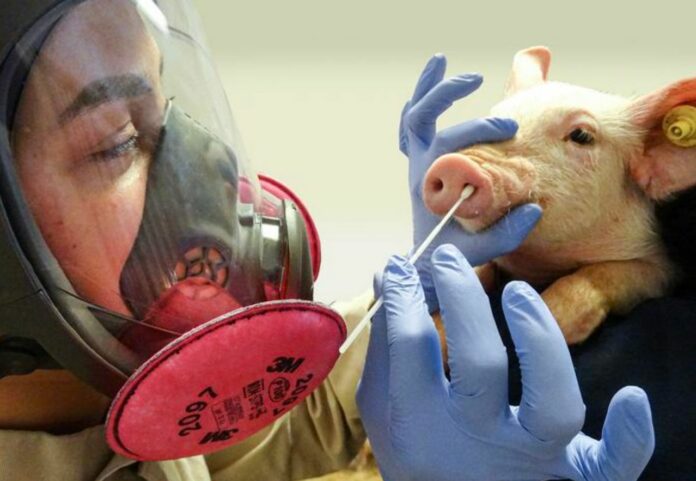A new study warns that the “Swine flu” strain, known as pdm09, should be urgently controlled to avoid another H1N1 pandemic.
The “Swine flu” strain, known as pdm09, has spread from humans to pigs almost 400 times since its emergence in 2009, signifying an imperative need for managing Influenza A infection among those working in swine care.
A fresh study conducted on the Influenza A strain accountable for the H1N1 pandemic in 2009—pdm09—confirms the frequent occurrences of this virus transition from humans to pigs. The count is estimated to be around 370 times since 2009.
Notably, subsequent circulation of pdm09 in pigs has driven the evolution of new pdm09 variants, which have eventually made their way back to the human population.
These findings were shared by Alexey Markin from the U.S. Department of Agriculture-Agricultural Research Service and his team in the open-access journal PLOS Pathogens.
Influenza A is notorious for causing flu in humans, birds, pigs, and certain other mammals. The pandemic triggered by pdm09 in 2009 and 2010 led to thousands of fatalities worldwide.
As past research has pointed out, the pdm09 virus has repeatedly transitioned from humans to pigs since then. This circulation among pigs encourages evolutionary changes in pdm09, increasing the likelihood of the virus crossing back and infecting humans.
For a more comprehensive understanding of this risk, Markin and his team analyzed the transmission data of pdm09 from 2009 to 2021.
They also delved into how these interspecies transmission events might have influenced the genetic diversity of the virus in pigs and the subsequent risk of human infection.
The analysis elucidates that pdm09 has moved from humans to pigs approximately 370 times since 2009, the majority of which occurred when the human population bore the highest burden of pdm09.
Interestingly, despite a decline in pdm09 circulation among humans during the COVID-19 pandemic in 2020 and 2021, the pdm09 continued to circulate in pigs due to about 150 human-to-pig transmissions between 2018 and 2020.
The study discovered that while most human-to-swine transmission events were isolated incidents, a few resulted in the continued circulation of different pdm09 genetic lineages among pigs in the U.S.
These swine-circulating variants seemed to be ill-matched with human seasonal vaccines, implying that these vaccines might offer minimal protection against them.
Moreover, the analysis indicates that the sustained circulation of pdm09 among pigs correlated with at least five instances of swine-to-human transmission.
These observations enhance the growing body of evidence that argues for the management of Influenza A infection in individuals working with pigs.
This can help curb the transmission to pigs and consequentially decrease the chance of the virus returning to the human population.
The researchers conclude, “Controlling influenza A virus infection in humans can minimize spillover of viruses into pigs and reduce the diversity of viruses circulating in swine populations.
“Limiting virus diversity in pigs can minimize the emergence of novel viruses and the potential for swine-to-human transmission of influenza A virus.”
Source: 10.1371/journal.ppat.1011476
Image Credit: Shutterstock
